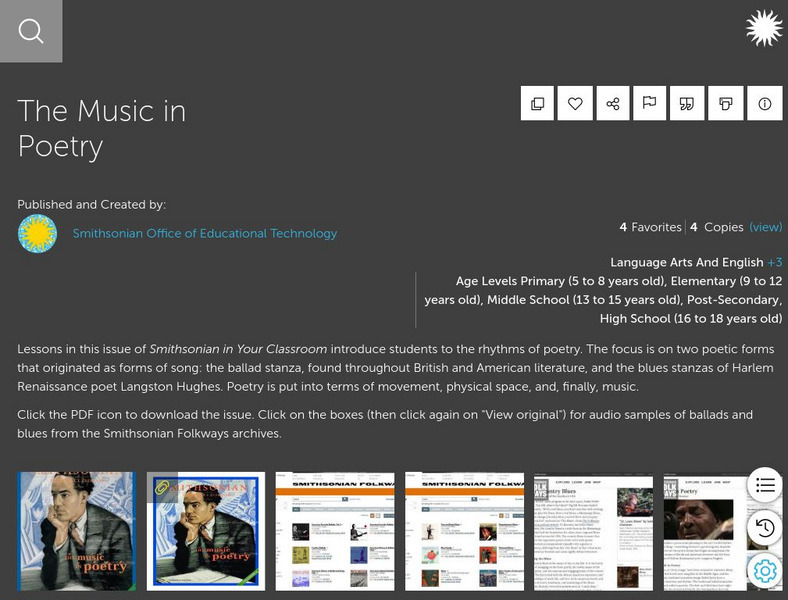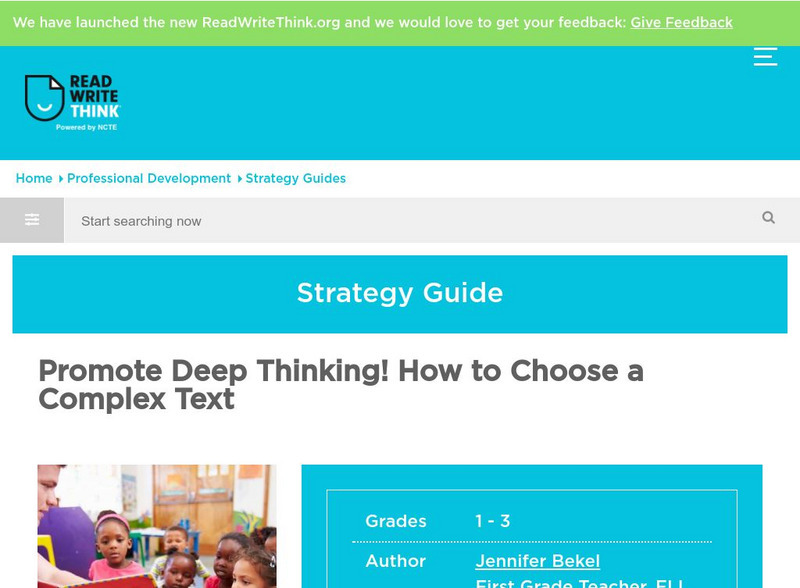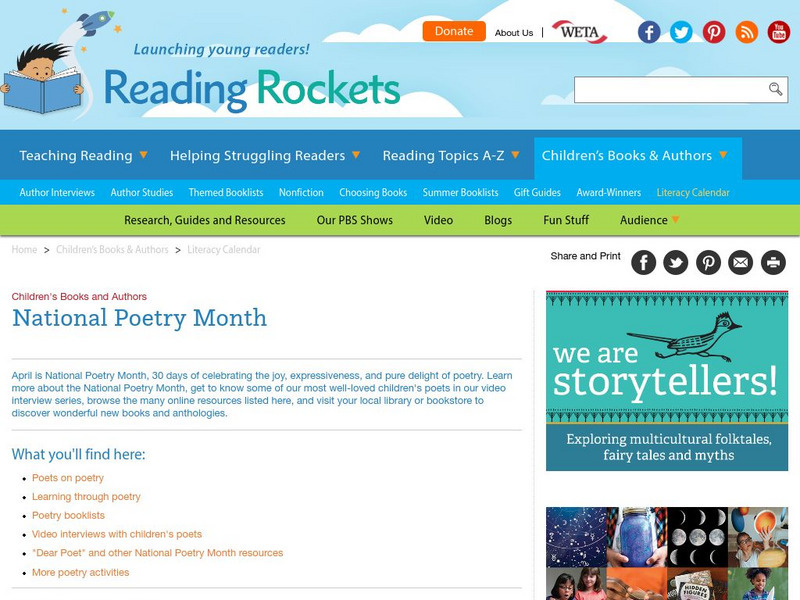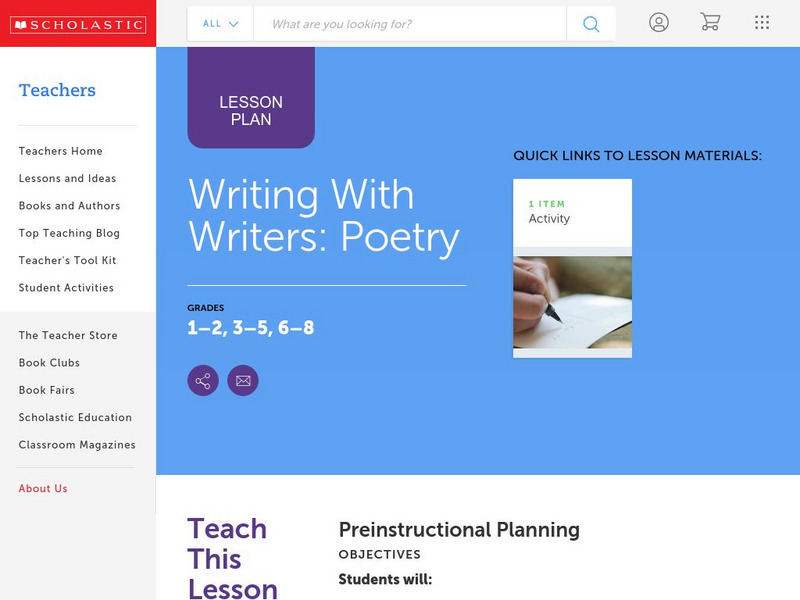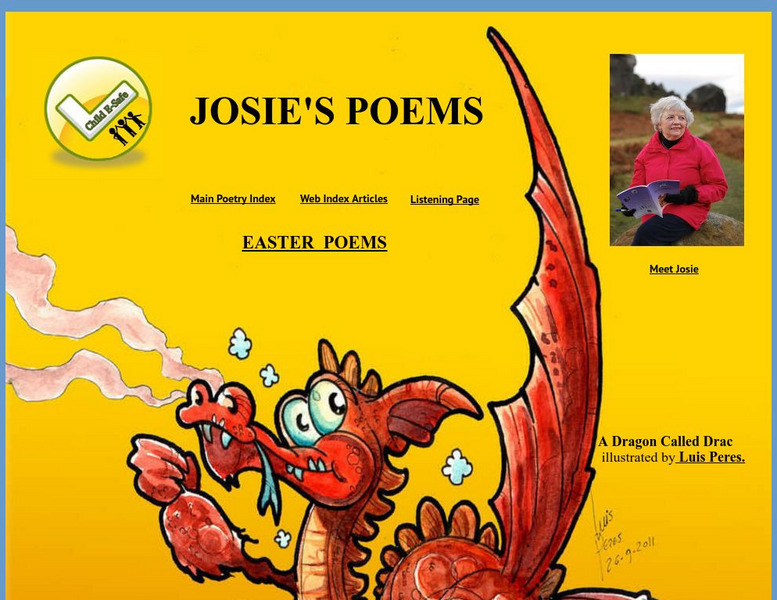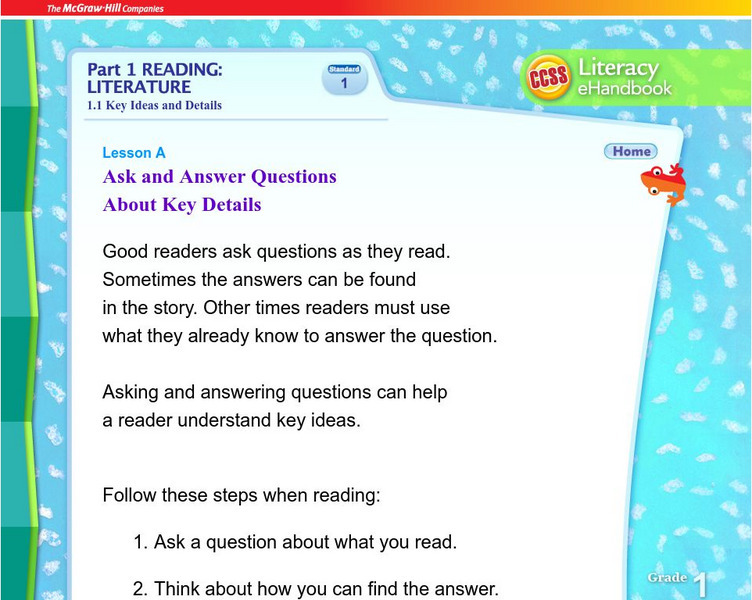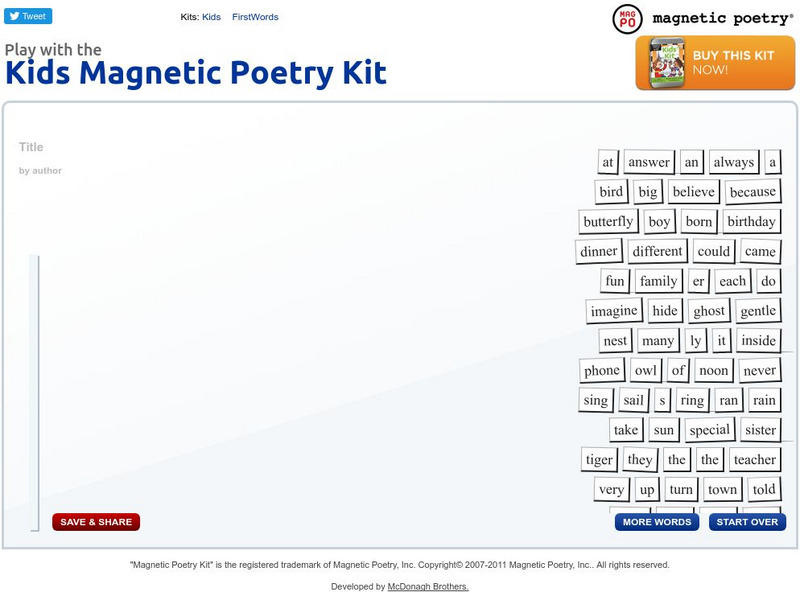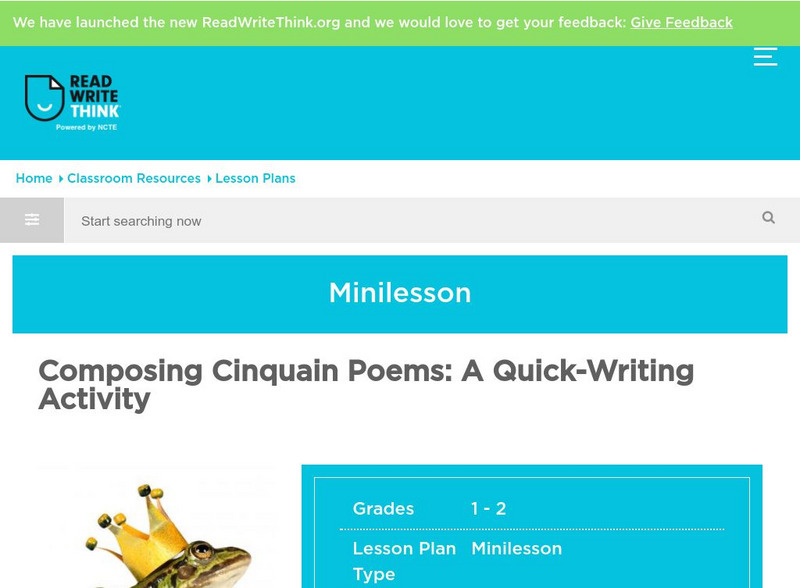McGraw Hill
Mc Graw Hill Education: Grade 1: Treasures: Practice Book O [Pdf]
Help Grade 1s reinforce their understanding of the reading skills, vocabulary acquisition, phonemic awareness, and sight words with the exercises in this 275-page workbook. This workbook is designed to supplement the stories from Grade 1...
US Department of Education
U.s. Dept. Of Education: Compact for Reading: First Grade Activities (Spanish)
Links to 100 first grade activities arranged by skill set and designed to improve reading and writing. All activities are in PDF format and are ready to print and use. They can be downloaded individually, according to skill set, or as...
Smithsonian Institution
Smithsonian Learning Lab: The Music in Poetry
Smithsonian in the Classroom presents The Music in Poetry. Teachers can download this comprehensive teaching package for exploring the rhythms in poetry. Includes background information, lesson extensions, student handouts, examples of...
Free Reading
Free Reading: Find the Rhyme: Identifying and Generating Rhyming Words
A game in which students are given a word and must hunt around the classroom for a word that rhymes with it.
Free Reading
Free Reading: Make a Big Book of Rhymes: Identifying and Generating Rhyming Words
In this teacher-led activity on this site, students work together in the classroom creating a book full of rhymes.
ReadWriteThink
Read Write Think: Deeper Reading Response a Template for Teachers
Contains plans for three lessons that teach students to express and perform responses to reading. In addition to objectives and standards, this instructional plan contains links to PDF handouts and sites used in the lessons as well as...
ReadWriteThink
Read Write Think: Promote Deep Thinking! How to Choose a Complex Text
This is a strategy guide to determine if reading material is complex and therefore, worth a close reading. It offers a list of quantitative, qualitative, reader characteristics/task consideration measures of text complexity.
Reading Rockets
Reading Rockets: National Poetry Month
This site offers extensive resources for teaching poetry. Find interviews with poets, ideas for poetry lessons, book lists, and ways to use poetry across the curriculum. There are also resources specifically for National Poetry Month....
Scholastic
Scholastic: Poetry Writing
This site comes from the Scholastic website and provides a teacher's guide to writing poetry. This lesson plan is put together very well and provides an outline of the project, learning objectives, assessment information and much more.
Academy of American Poets
Poets.org: Curriculum and Lesson Plans
This collection of resources assists educators in teaching students about the art of poetry. Includes links to poetry with grade level, lesson plans, discussion suggestions and classroom exercises. RL.9-10.10a&b text complexity,...
Read Works
Read Works: Poems & Questions for National Poetry Month
[Free Registration/Login Required] This site contains a collection of sets of poems with comprehension questions. The poems were joined as a resource for teachers who are recognizing National Poetry Month during April of each year.
Other
Center for Assessment: Tools for Examining Text Complexity [Pdf]
Learn how to use several tools to determine text complexity and readability of text for your students.
CPALMS
Cpalms: A Chilly Feeling
[Free Registration/Login Required] In this close reading lesson, the students will analyze the poem "It Fell in the City" by Eve Merriam. They will read the poem, identify words or phrases that show feelings or appeal to the senses,...
Reading Rockets
Reading Rockets: Descriptive Writing
This is a comprehensive article about what descriptive writing including what it is, why to teach it and strategies to teach it. It also features two videos Five Senses Graphic Organizer and Writing Poems as well as an annotated list of...
Reading Rockets
Reading Rockets: Looking at Writing: First Grade
First graders write many times a day to express their interests - they are writing with a purpose through stories, letters, and lists. In this section, you'll find writing assessment resources, writing strategies, and additional tip...
Josie's Poems
Josie's Poems: Main Index
British poet Josie Whitehead shares many of her children's poems in both print and in audio on her Listening Page. Whitehead was a career teacher and provides information for teachers and parents about sharing poetry with children.
University of Oregon
University of Oregon: Cinquain Poems
Discover how to write a cinquain poem when you visit this resource. This site features a sample of a cinquain and directions to create your own. Come and check out how much fun poetry can be.
Writing Fix
Writing Fix: How to Make Poetry
Students learn how to write poetry through ten Writing Workshop mini-lessons. Students complete the graphic organizers provided while learning to notice details, write similes and metaphors, and create patterns in their writing.
Curated OER
Mc Graw Hill: Part 1: Reading Literature
Learn how asking and answering questions can help readers understand literature better. Site includes a model and an example of how to use this system.
Curated OER
Mc Graw Hill: Part 1: Reading Literature: 1st Grade Retell Stories
Learn how to use retelling a story to increase student's comprehension of a story.
Other
Magnetic Poetry: Kids' Magnetic Poetry Kit
Students use magnetic words, phrases, and suffixes to create their own poems. They can save their poetry and, if they choose, e-mail their poems to others.
Other
Children's Poetry Archive
A collection of hundreds of poems chosen for their appeal to children. Most have both text and audio versions. Selections can be filtered by poet or by theme, or simply browsed through.
ReadWriteThink
Read Write Think: Composing Cinquain Poems: A Quick Writing Activity
Students use themed graphic organizers to compose cinquain poems on topics common in the early elementary classroom.
ReadWriteThink
Read Write Think: Multipurpose Poetry: Introducing Science Concepts
How do you develop a cross curricular activity? Come to this website and watch this instructional activity unfold into several curricular areas.


![Mc Graw Hill Education: Grade 1: Treasures: Practice Book O [Pdf] eBook Mc Graw Hill Education: Grade 1: Treasures: Practice Book O [Pdf] eBook](https://content.lessonplanet.com/knovation/original/18007-7c8c04c9682808498263fe65a53635db.jpg?1661551620)

